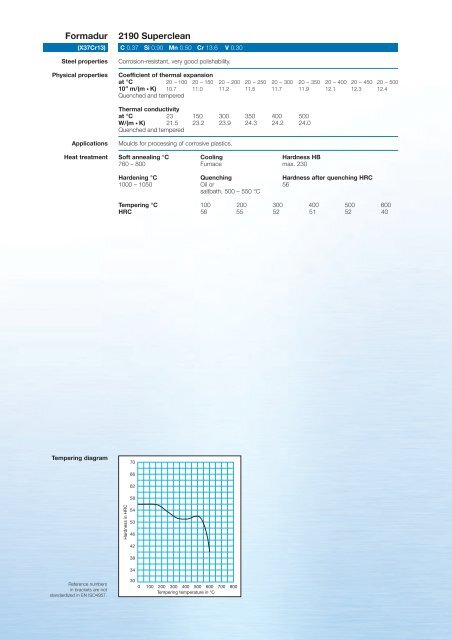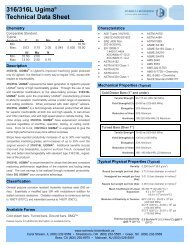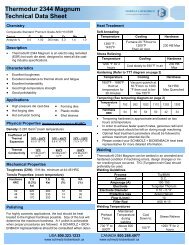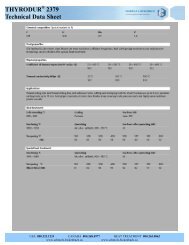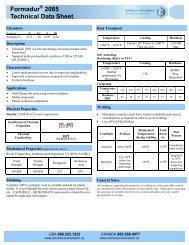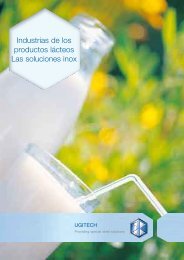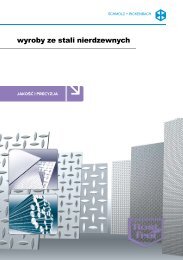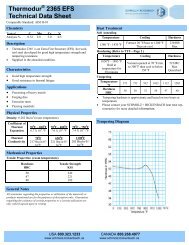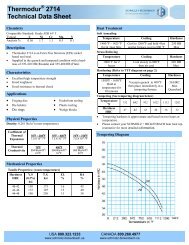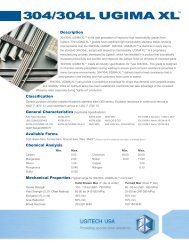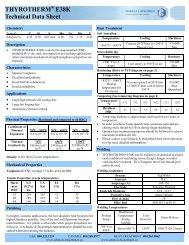Formadur - SCHMOLZ-BICKENBACH.US
Formadur - SCHMOLZ-BICKENBACH.US
Formadur - SCHMOLZ-BICKENBACH.US
Create successful ePaper yourself
Turn your PDF publications into a flip-book with our unique Google optimized e-Paper software.
<strong>Formadur</strong><br />
(X37Cr13)<br />
Steel properties<br />
Physical properties<br />
2190 Superclean<br />
C 0.37 Si 0.90 Mn 0.50 Cr 13.6 V 0.30<br />
Corrosion-resistant, very good polishability.<br />
Coefficient of thermal expansion<br />
at °C<br />
20 – 100 20 – 150 20 – 200 20 – 250 20 – 300 20 – 350 20 – 400 20 – 450 20 – 500<br />
10 -6 m/(m • K) 10.7 11.0 11.2 11.5 11.7 11.9 12.1 12.3 12.4<br />
Quenched and tempered<br />
Thermal conductivity<br />
at °C<br />
23 150 300 350 400 500<br />
W/(m • K) 21.5 23.2 23.9 24.3 24.2 24.0<br />
Quenched and tempered<br />
Applications<br />
Heat treatment<br />
Moulds for processing of corrosive plastics.<br />
Soft annealing °C Cooling Hardness HB<br />
760 – 800 Furnace max. 230<br />
Hardening °C Quenching Hardness after quenching HRC<br />
1000 – 1050 Oil or 56<br />
saltbath, 500 – 550 °C<br />
Tempering °C 100 200 300 400 500 600<br />
HRC 56 55 52 51 52 40<br />
Tempering diagram<br />
70<br />
66<br />
62<br />
58<br />
Hardness in HRC<br />
54<br />
50<br />
46<br />
42<br />
38<br />
34<br />
Reference numbers<br />
in brackets are not<br />
standardized in EN ISO4957.<br />
30<br />
0 100 200 300 400 500 600 700 800<br />
Tempering temperature in °C


